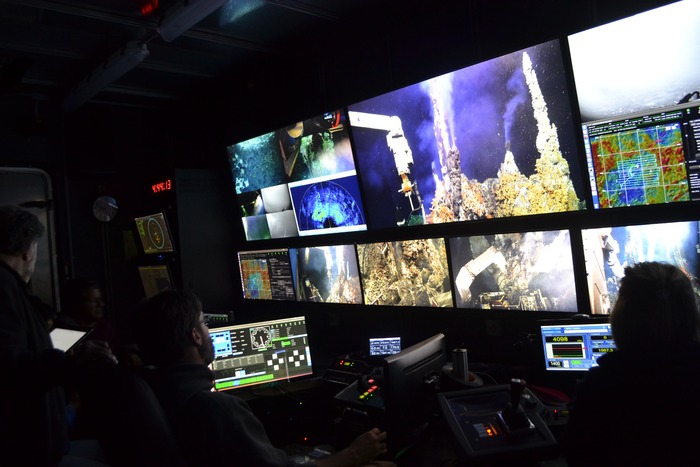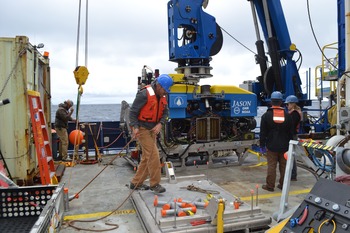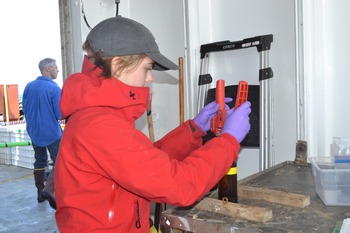It takes a team to do what we do and we are lucky to have a great one.
Tonight it is with reluctance that we leave Axial Seamount where we have been working 24/7 for the past several days. We are so very lucky to be able to do this work, funded by the National Science Foundation.
Here, we have seen and experienced things few in the world get to:
- Hot spring chimneys covered in life that has never seen sunlight - beautiful tubeworms with vibrant red plumes, purple-blue ciliates, sulfide worms that thrive in near scalding water and form casings of metal sulfide
- Apparent ‘flames’ at the top of a nearly 55 ft-tall chimney called El Guapo that emits 662°F metal-rich fluids into the overlying ocean.
- Huge rattail fish, swimming slowly and gently in the dark freezing waters that may be 50-70 years old – these friends visit us every year as we work in the International District Hydrothermal Field. We wonder what they are thinking?
- Lakes and rivers of frozen, glass covered lava that mark past eruptions – 70% of the volcanism on Earth occurs along mid-ocean ridge spreading centers like the one that bisects Axial Seamount. Our dream, through the Cabled Array, is to actually “be” at Axial with a resident autonomous vehicle when Axial next erupts, perhaps in as little as 2-3 years. What does a river of lava look like underwater?
It takes a team to do what we do and we are lucky to have a great one. From Captain Dave Murline and crew of the R/V Revelle, to the ROV Jason team, to the UW Cabled Array engineers and scientists both on and off the ship, and finally the students who contribute immensely to the success of the program. We are all thankful for their ear-to-ear smiles, laughter, and wide-eyed excitement. They remind us why we started this career and why we are out here.
So tonight, as we steam 16 hours eastward towards the Cascadia Margin off Oregon to continue this journey, some of us are thinking about Axial and when we will be lucky enough to work again at this amazing place.




